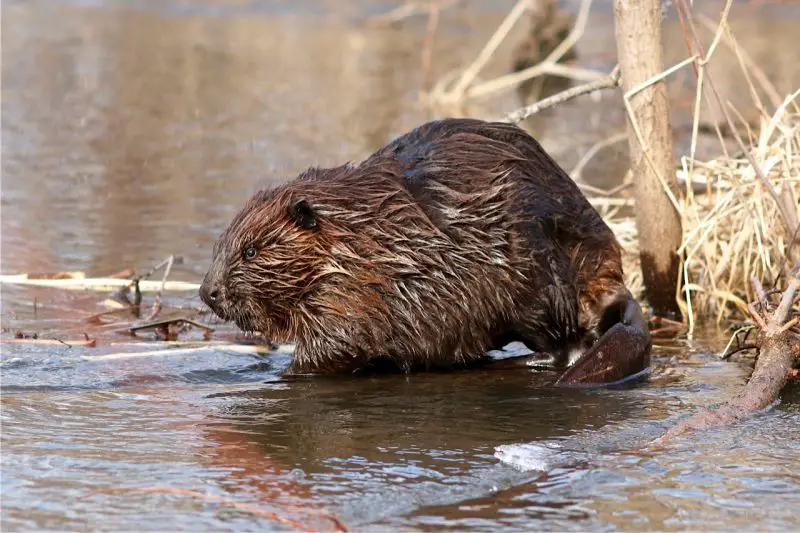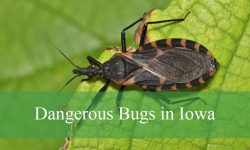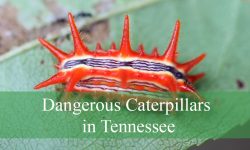Beavers have long been recognized as master architects of the wild, known for their impressive dams and the wetlands they help create. In Texas, these elusive and industrious creatures inhabit rivers, lakes, creeks, and backwaters, where they quietly shape entire ecosystems. While they may not always be seen, their presence is deeply felt in the landscapes they transform. The story of beavers in Texas is not just one of survival, but one of resilience, adaptation, and surprising ecological impact.
Understanding the secret life of beavers in Texas reveals a fascinating world beneath the water’s surface—a world of nocturnal activity, strategic engineering, and ecological balance. These mammals play a vital role in Texas waterways, and their story is worth uncovering.
Beavers in Texas: A Quiet but Powerful Presence

The North American beaver, Castor canadensis, is found throughout much of Texas, from the eastern piney woods to the semi-arid western regions where water bodies persist. While their range is widespread, their activity often goes unnoticed because of their mostly nocturnal behavior and preference for remote areas.
Beavers prefer habitats with consistent water levels and abundant vegetation, which provide the materials needed for their dam-building efforts and the food to sustain their families. In Texas, this means they are most commonly found along the banks of slow-moving rivers, natural lakes, and man-made reservoirs. Despite the increasing human development, beavers have proven themselves surprisingly adaptable to urban and suburban environments as long as water and vegetation are available.
Unlike many other mammals, beavers actively modify their environment to suit their needs. They build dams to create ponds that offer safety from predators and access to underwater entrances to their lodges. These structures not only serve the beaver’s needs but also influence water flow, sediment deposition, and wetland formation, making beavers one of the few animals classified as ecosystem engineers.
How Beavers Build and Live in the Water
The construction methods of beavers in Texas mirror their counterparts in other regions, but with adaptations specific to the local environment. Using tree branches, mud, stones, and vegetation, they build sturdy dams across streams and rivers. In flatter regions of Texas where water does not flow rapidly, beavers may create extensive canal systems instead of high dams, allowing them to transport food and materials efficiently.
The lodges, often built in the center of the ponds created by dams, serve as homes for beaver families. These lodges are intricately designed with underwater entrances that prevent access by land-based predators. Inside, a network of dry chambers allows the beavers to rest, raise their young, and store food.
In places where digging is easier than building, such as along lake shores or earthen riverbanks, beavers may create burrows instead of lodges. These burrows offer similar protection but are less visible above ground, making beaver presence even more secretive. Regardless of structure, the beaver’s home is central to their daily life and survival strategy.
What Beavers Eat and How They Affect Vegetation
Beavers are strict herbivores, relying heavily on woody plants and aquatic vegetation for sustenance. In Texas, their diet includes willow, cottonwood, aspen, and buttonbush, along with the inner bark of many deciduous trees. During warmer months, they supplement their diet with cattails, water lilies, and other soft aquatic plants.
The way beavers forage significantly impacts the surrounding vegetation. They can fell small trees with astonishing efficiency, creating open spaces that encourage the growth of grasses, shrubs, and young trees. This behavior increases plant diversity and creates habitats for other wildlife. Over time, beaver foraging reshapes riparian zones and introduces ecological variety in places where monocultures might otherwise dominate.
Contrary to common belief, beavers do not eat the wood itself. Instead, they consume the inner bark and cambium layer of twigs and branches. Their teeth grow continuously, allowing them to gnaw through wood year-round without wearing them down. This unique adaptation gives them the tools they need to manipulate their environment with precision.
Nocturnal Activities and Communication Under the Moonlight
One of the reasons beavers are rarely seen by humans is their strictly nocturnal lifestyle. Most of their activities—gathering materials, repairing dams, foraging, and grooming—take place under the cover of darkness. This behavioral pattern reduces their exposure to predators and human disturbance, allowing them to operate in otherwise populated areas undetected.
Communication among beavers is also a subtle affair. They use scent marking to establish territory boundaries, particularly through the use of castoreum, a musky secretion from glands near their tail. This scent is applied to mounds of mud and vegetation placed strategically around their habitat. These scent mounds serve as warnings to intruders and reduce conflict between colonies.
Auditory communication is limited but effective. Beavers will slap their broad, flat tails against the water’s surface to signal danger. This sound carries over long distances in the stillness of night and serves to alert other beavers to retreat into the safety of their lodge or burrow.
The Role of Beavers in Texas Ecosystems
Beavers play a significant role in shaping Texas ecosystems. Their dams slow water flow, which reduces erosion, recharges groundwater, and creates habitats for a wide range of species. The ponds formed behind these dams support amphibians, fish, birds, and mammals that rely on still or slow-moving water.
In dry parts of Texas, beaver-created wetlands are particularly important. They provide rare aquatic environments in otherwise arid landscapes, offering oases for wildlife and helping to mitigate drought impacts. These wetlands can also improve water quality by filtering out sediments and pollutants, serving as natural biofilters for surrounding areas.
The ecological benefits of beaver activity extend to humans as well. In areas prone to flash flooding, beaver dams can reduce peak flow by spreading water across floodplains, which helps minimize downstream damage. Their work promotes biodiversity, enhances carbon sequestration in wetland soils, and supports sustainable water management practices.
Challenges Beavers Face in Texas Today
Despite their many contributions, beavers in Texas face ongoing threats. Habitat loss due to urban expansion, water diversion, and agricultural development has reduced the availability of suitable homes. Dams and levees constructed by humans can interfere with natural water flow, limiting the beaver’s ability to establish long-term colonies.
Additionally, beavers are often viewed as nuisances when their activities conflict with human infrastructure. Their dam-building can flood roads, fields, or residential areas, leading to removal or trapping efforts. While regulated, such control measures can fragment populations and reduce the ecological benefits beavers bring.
Predation also affects beaver populations. In Texas, young beavers are vulnerable to coyotes, bobcats, and large birds of prey. Adult beavers, due to their size and aquatic agility, are less frequently targeted but can still fall victim in rare cases.
Beavers and Human Coexistence in the Lone Star State
The relationship between humans and beavers in Texas is a complex one. On one hand, their dam-building behavior can create conflicts with landowners and infrastructure. On the other hand, more Texans are beginning to recognize the ecological services these animals provide. With proper management and education, coexistence is not only possible—it can be mutually beneficial.
Innovative solutions are now being used to reduce human-beaver conflicts without harming the animals. Flow devices, for example, can be installed in dams to regulate water levels and prevent flooding. Fencing and tree-wrapping methods can protect valuable trees and landscaping from beaver gnawing.
Public awareness campaigns and conservation efforts are increasingly highlighting the value of beavers in natural systems. By viewing beavers as ecosystem allies rather than pests, communities across Texas are learning to work with, rather than against, these unique mammals.
Conservation and the Future of Texas Beavers
Beavers were once heavily trapped for their pelts, nearly disappearing from large portions of North America, including Texas. Fortunately, protective regulations and habitat restoration efforts have allowed populations to rebound in many areas. Today, beavers are considered a species of least concern, but their conservation remains important in fragmented or drought-prone parts of the state.
Organizations and agencies continue to monitor beaver populations and work with landowners to promote coexistence strategies. In some cases, reintroduction projects have helped reestablish beaver colonies in areas where they had been extirpated. These efforts not only support biodiversity but also increase public understanding of beaver behavior and value.
Looking forward, climate change presents both challenges and opportunities for beavers in Texas. More erratic weather patterns and prolonged droughts may limit suitable habitat. However, the wetland environments created by beavers can help mitigate these effects by storing water, improving resilience, and enhancing ecosystem stability.
Observing Beavers in Texas: What to Watch For
For those hoping to catch a glimpse of beavers in the wild, patience and timing are key. The best chances come at dusk or dawn, particularly in quiet, undisturbed areas with evidence of recent beaver activity. Look for freshly chewed tree stumps, mudslides leading into the water, or the presence of a small dam or lodge.
Binoculars and a quiet approach are essential. Beavers are wary of human presence and will often dive underwater or retreat to safety at the first sign of disturbance. Observing them from a distance not only increases your chances of seeing them but also helps protect their sensitive habitat.
Some state parks, nature preserves, and wildlife refuges in Texas offer excellent opportunities for wildlife viewing, including beavers. Rivers like the Brazos, Colorado, and Guadalupe, as well as wetlands in East Texas, often support active colonies.
Why Beavers Deserve a Place in the Texas Story
Beavers are more than just dam-builders—they are key players in the complex natural systems of Texas. Their ability to transform landscapes, regulate water, and support biodiversity places them among the most influential mammals in the state’s ecosystems. Yet, their secretive habits and occasional conflicts with humans often keep them in the shadows.
Bringing the story of beavers in Texas into the light means understanding their role, recognizing their value, and taking steps to support their continued presence. Whether you live in the piney woods of East Texas or the dry plains of the west, the influence of beavers may be closer than you think—flowing quietly through the rivers and lakes that connect us all.
FAQs About Beavers in Texas
Are beavers native to Texas?
Yes, the North American beaver (Castor canadensis) is native to Texas and has historically been present throughout the state’s rivers, lakes, and wetlands.
Where can I find beavers in Texas?
Beavers are commonly found near slow-moving rivers, creeks, lakes, and reservoirs, particularly in East and Central Texas where water and vegetation are abundant.
Do beavers cause flooding in Texas?
Beavers may inadvertently cause localized flooding when their dams block water flow, but this can often be mitigated using flow control devices without harming the animals.
What should I do if I see a beaver near my property?
If a beaver is not causing damage or flooding, it’s best to leave it undisturbed. For conflicts, non-lethal solutions such as fencing or tree protection can help.
Are beavers protected in Texas?
While not endangered, beavers are managed under Texas wildlife regulations. Trapping or relocation typically requires permits to ensure ethical and ecological considerations are met.






